Money
Nepal to grow 4.4 percent this fiscal: ADB
But ongoing tariff rises may cause a global economic downturn, affecting Nepal’s tourism receipts and remittances, and less foreign aid could impact growth.
Post Report
Nepal’s economy is anticipated to grow by 4.4 percent in the current fiscal year, ending mid-July, up from an estimated growth of 3.9 percent in the past fiscal year, according to the Asian Development Outlook released on Wednesday.
The flagship publication of the Asian Development Bank (ADB) said Nepal’s improved growth forecast is the result of a gradual recovery of domestic demand, addressing reforms in the private sector, and further revitalisation of tourism and related services.
ADB Country Director for Nepal Arnaud Cauchois said, “Key economic sectors, such as manufacturing and construction, which contracted in the last fiscal year, would expand this fiscal year owing to stable oil and raw material prices, increased liquidity, and declining interest rates, which have paved the way for increasing credit to all production sectors.”
The report said key production sectors are expected to expand. The Ministry of Agriculture projects a 4 percent increase in paddy output this fiscal year, attributed to an above-normal monsoon, timely availability of fertilisers, and high-yielding variety seeds.
However, scant winter rainfall may harm winter crops, reducing overall agriculture growth from 3 percent in the last fiscal year to 2.8 percent this fiscal year.
Key economic sectors like manufacturing and construction, which contracted in 2023-24, will expand this fiscal year owing to stable oil and raw input prices, increased liquidity, and declining interest rates, which have paved the way for more credit to all production sectors.
As the government aims to expedite capital expenditure, targeting an 85 percent execution rate, the stymied construction subsector will grow, the report said.
Overall, industrial growth is projected to rise to 3.9 percent, driven largely by the electricity subsector, which grew by 21.4 percent year on year in the first quarter of the current fiscal year and is expected to expand as hydroelectric projects are implemented.
Supported by increased access to credit, higher commitment in foreign direct investment, and a rebound in international tourist arrivals, service sector growth is expected to rise to 4.8 percent.
Increased domestic demand in the second half of the current fiscal year will strengthen the wholesale and retail sectors.
Transport and logistics will benefit from improved road networks and higher tourist flow.
Information and communication services will also strengthen, with a 29 percent increase in exports in the first six months of the current fiscal year, compared to 4.9 percent the previous year.
Recent amendments to the Foreign Investment and Technology Transfer Act and the Company Act, allowing foreign direct investment in Nepal’s IT sector, will further boost growth, the report said.
The report said total investment should add 6.6 percentage points to GDP growth. Private investment will be spurred as the sector’s concerns related to investment and government services are being addressed.
Service-oriented industries are now authorised to invest in special economic zones, previously open only to manufacturing industries.
The reforms aimed at simplifying company registration and liquidation processes. New provisions support Nepali companies in foreign markets by enabling them to open branches, conduct business, and repatriate income to Nepal.
The repatriation of foreign investments and earnings has also been streamlined. In response to private sector concerns about delays, the reforms now mandate decision-making authorities to act within a maximum of seven days when legal deadlines are specified.
Public investment is expected to grow by 18.6 percent in the current fiscal year as project implementation is slated to accelerate due to commitments made in the midyear budget review.
Projects that have not reached the implementation phase will be postponed for the remainder of the fiscal year.
Private consumption, which makes up about 80 percent of the country’s GDP, will expand by 2 percent to add 1.6 points to growth due to strong remittance inflows.
The report said fiscal policy will support growth as public consumption rises on higher allocations for employee compensation and more expenditure on goods and services, transfers, and social security under the current fiscal year budget.
Exports will increase as Nepal expands its electricity generation and transmission lines, becoming a consistent net exporter of electricity.
Imports, especially of capital goods, will rise on stronger public capital expenditure, and net service imports will also rise due to higher travel costs for Nepalis going abroad.
Overall, net exports of goods and services will subtract from growth due to the large import volume, according to the report.
Gross domestic product (GDP) growth is forecast to reach 5.1 percent in the next fiscal year 2025-26, fuelled by government reforms to improve capital budget execution, advancements in tourism and related services.
Similarly, enhanced agricultural productivity through mechanisation and better irrigation systems, contingent on a favorable monsoon could also rev up the economy.
The ADB said Nepal’s economy is expected to see moderate growth in the current fiscal year and the next fiscal year.
The inflation forecast is expected to remain within the central bank’s ceiling, assuming a normal harvest and a modest decline in inflation in India, the major source of imports.
Nepal’s external sector gained stability in the last fiscal year with higher foreign exchange reserves and a prudent monetary stance.
Despite higher imports in the latter half of the current fiscal year, strong remittance inflows are expected to keep the current account surplus at 0.1 percent of GDP.
In fiscal year 2025-26, a deficit equal to 2.4 percent of GDP is projected as goods and service imports accelerate.
There are also potential risks to the economy.
Ongoing tariff rises may cause a global economic downturn, affecting Nepal’s tourism receipts and remittances, and lower foreign aid could negatively impact growth as Nepal relies on foreign aid to finance development needs.
Under-execution of the capital budget would also dent growth prospects.
The ADB said that Nepal’s growth forecasts were finalised prior to the April 2 announcement of new tariffs by the US administration.
“So the baseline projections only reflect tariffs that were in place previously. However, the forecast does feature an analysis of how higher tariffs may affect growth in Asia and the Pacific,” according to ADB.




 9.12°C Kathmandu
9.12°C Kathmandu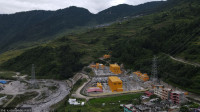
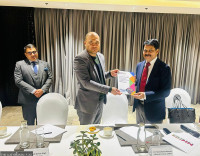



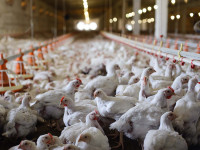

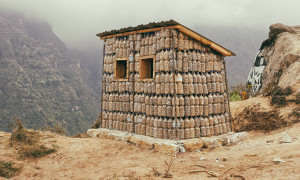


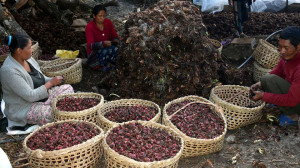


%20(1).jpg&w=300&height=200)
